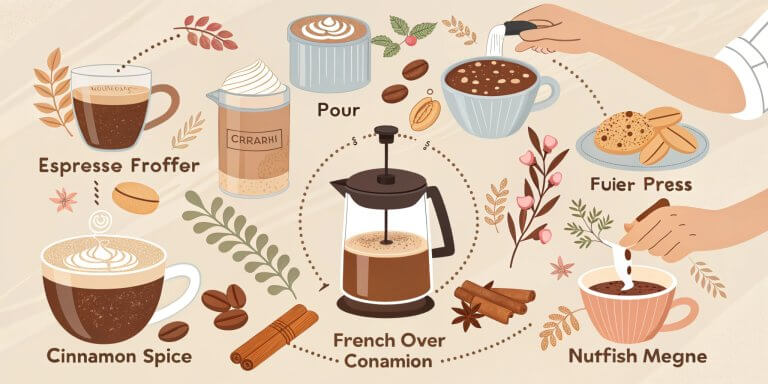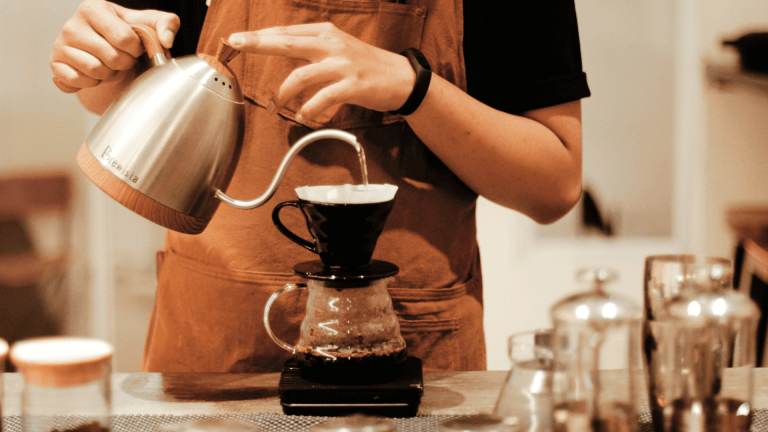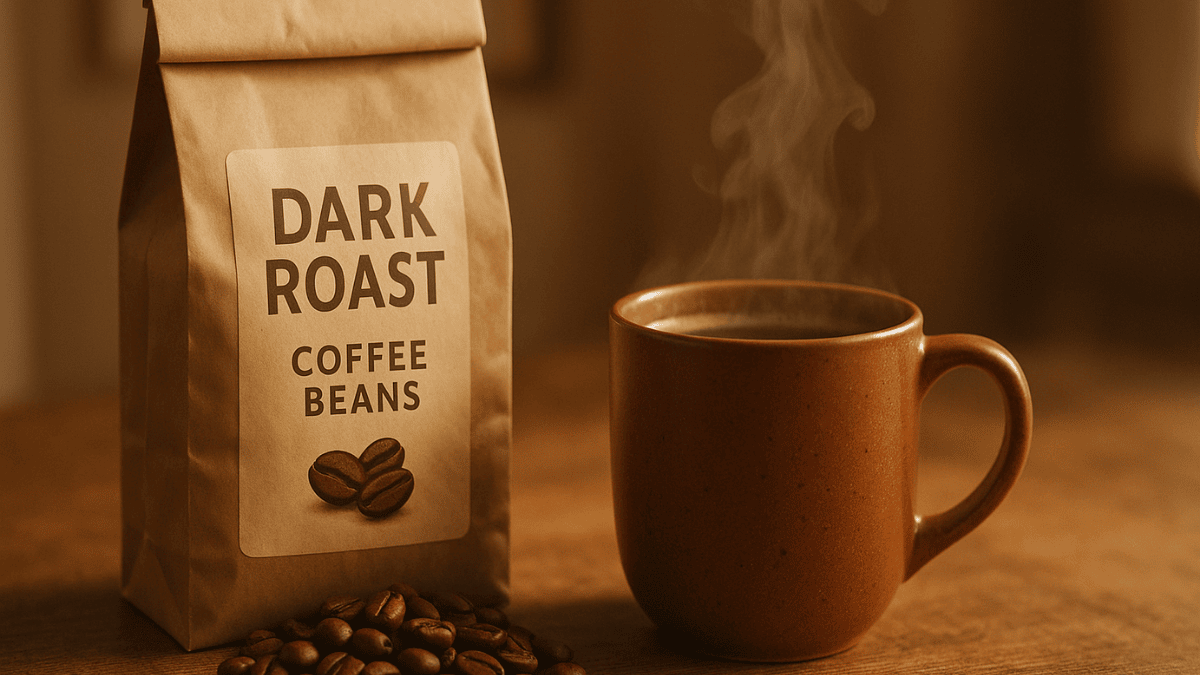
If you’ve ever woken up groggy and wondered how to jumpstart your day, dark roast coffee beans might be your answer. There’s something almost magical about the aroma they release when you open the bag, and the depth of flavor that warms you from the first sip. You’re not just drinking coffee, you’re setting the tone for your morning. The boldness of dark roast coffees can deliver the perfect combination of comfort and energy, making your daily routine feel a bit more special. Keep reading, and you’ll discover how to choose, brew, and enjoy dark roast coffee beans in ways that transform your mornings, one fragrant cup at a time.
Discover why dark roast matters
When you pick up a bag labeled “dark roast,” you’re buying more than just coffee. You’re getting beans that have been roasted long enough to develop that characteristic, rich, robust flavor. Some coffee lovers claim that once you go dark roast, you’ll never look back. But why does this particular roast level matter so much?
The difference between light, medium, and dark roasts
Before diving deeper into dark roast coffee beans, it’s helpful to know how roast levels vary overall:
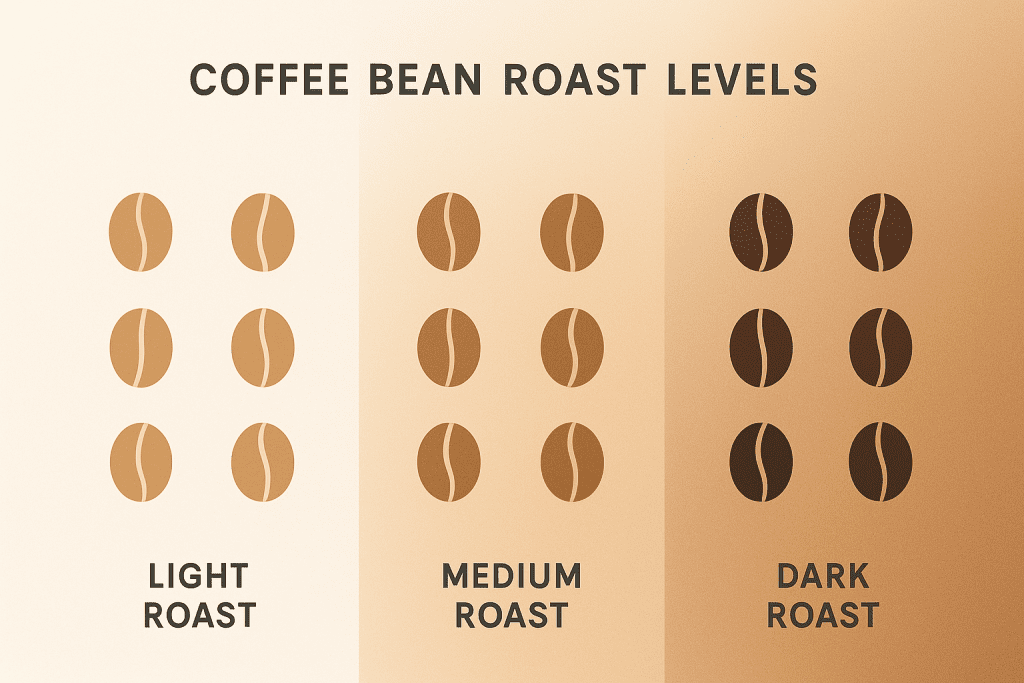
Infographic of roast level differences
Why do darker roasts taste so bold?
Darker roasts develop their defining flavor for a simple reason: the beans lose more moisture during the roasting process, and sugars begin to caramelize. This caramelization is what delivers the signature hint of chocolate or toasted nuttiness you often taste in dark roast coffees. That extra time in the roaster also affects the bean’s surface oils, creating a glossy appearance that can be missing from lighter roasts.
If you love a coffee that’s both comforting and punchy, dark roast coffees might soon become your go-to morning ritual. You’ll notice how each sip stands on its own, carrying a pronounced intensity that sometimes tastes like dark chocolate, sometimes like smoky caramel, and almost always feels pleasantly robust.
Unlock flavor with the right beans
Now that you appreciate why dark roast matters, it’s time to identify the beans themselves. Not all dark roast coffee beans are created equal, and figuring out which ones suit your taste can be a delightful—though slightly overwhelming—adventure. Fortunately, there are a few tips to help you pick the perfect bag.
Recognizing quality coffee beans
If you’re trying to decide among brands, check labels for indicators that brands often highlight:
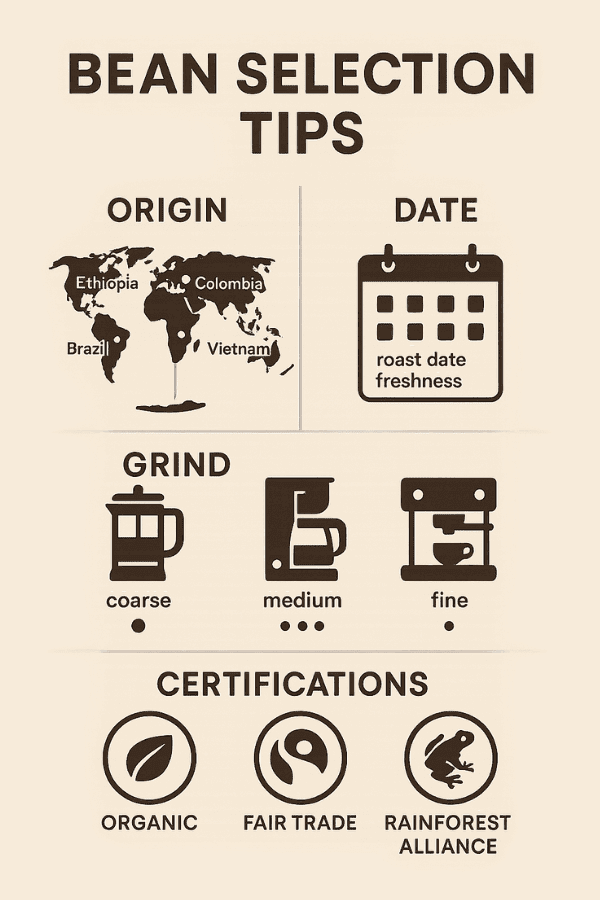
Bean Selection Tips
When you run across a few good candidates, feel free to experiment. Pick up a small amount of each, treat yourself to a fun tasting session, and figure out which flavor profile you like best. Maybe you’ll discover you prefer beans with a hint of chocolate or something more on the smoky side. No matter your end preference, your morning mug of dark roast coffee shares one thing in common: a certain richness that lighter roasts can’t quite deliver.
Embrace the ritual of brewing
Brewing dark roast coffee beans is not just a task; it’s a unique ritual that allows you to transition from morning haze to a vigilant state. With each step, you’re not just making coffee, you’re crafting a flavor and aroma that’s uniquely yours. This quick moment of focus on preparing your coffee can help clear your head before you dive into the day, making your morning routine more engaging and exciting.
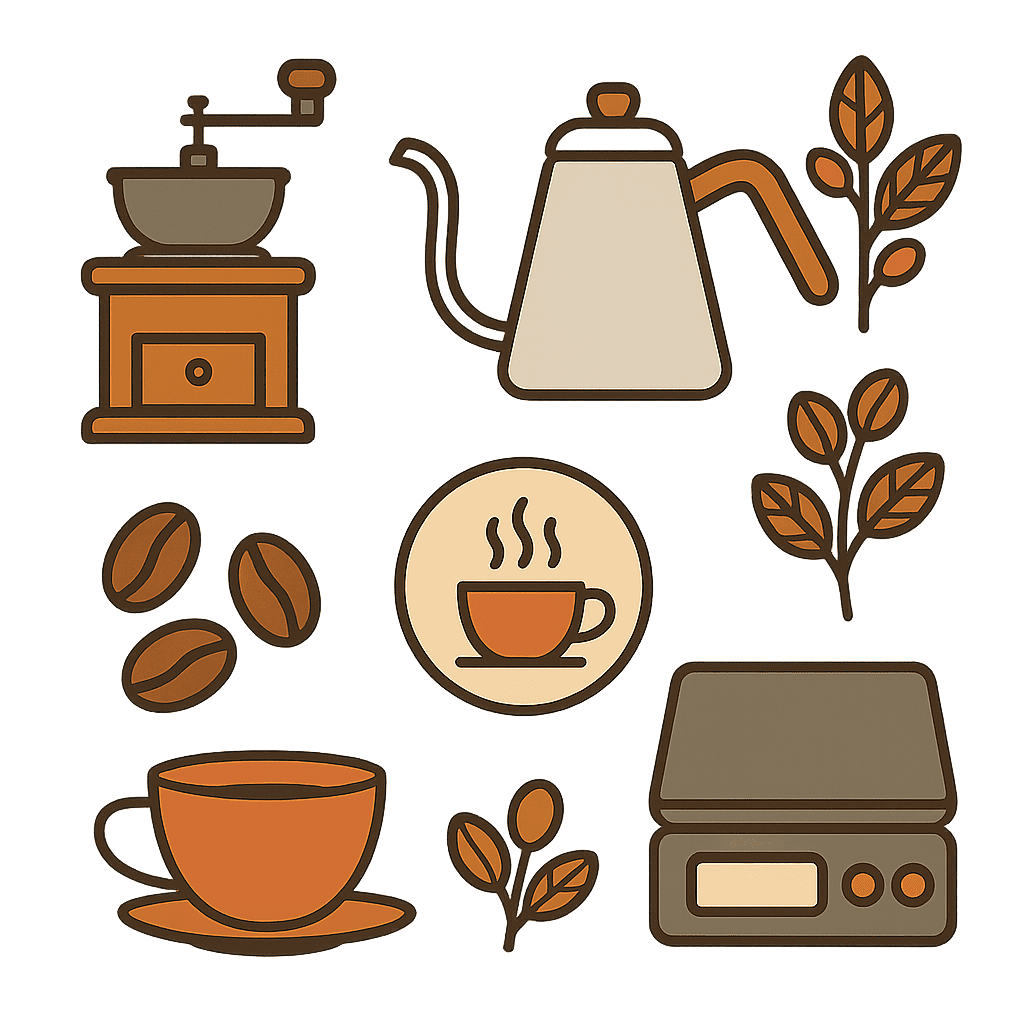
Infographic of brewing ritual equipment
Set up your coffee gear
Before you get started, gather the basic equipment:
When using dark roast coffees, the grind size can vary slightly depending on your method. For a pour-over, a medium-fine grind is a good start; for a French press, use a coarser grind. Even minor tweaks in grind size can influence flavor extraction. Don’t be afraid to experiment.
Try different brewing methods
Dark roast coffee beans are versatile enough to shine across brewing styles. Here are a few ideas:
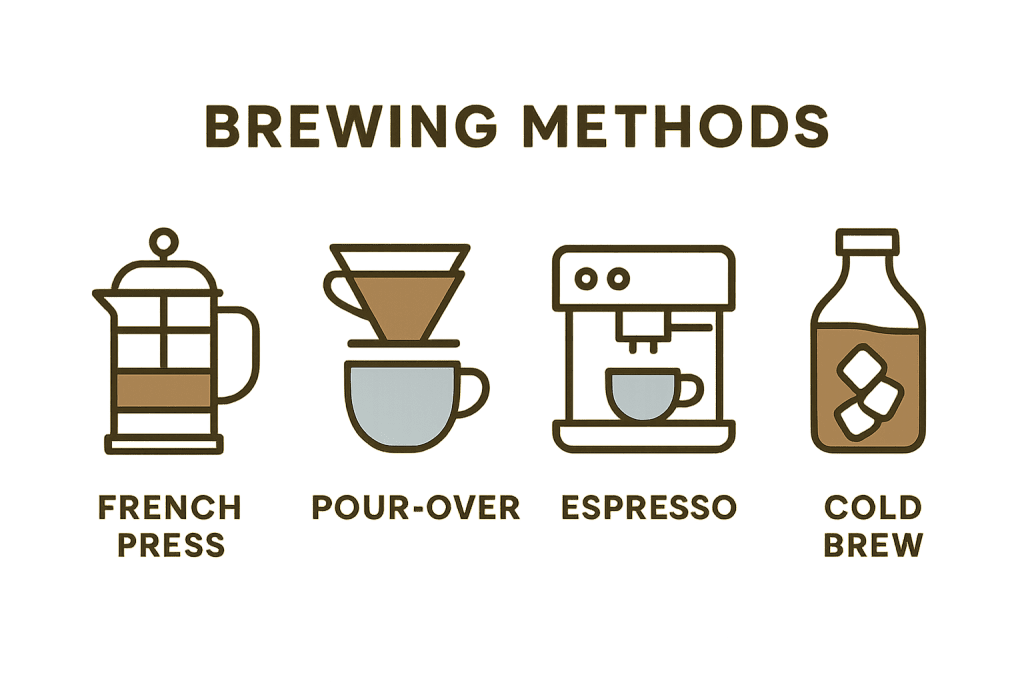
Brewing Methods Overview
No single method is “best.” Instead, focus on whichever brewing style resonates with your personal preferences, morning routine, and time constraints. Over time, you might find you prefer a French press on weekends but a quick drip coffee maker on busy weekday mornings. Either way, a good dark roast will keep that depth of flavor at center stage.
Explore health benefits
Sipping coffee isn’t just about flavor and aroma; it can also give you a gentle health boost. Dark roast coffees carry many of the widely touted benefits associated with regular coffee, and in some cases, there might even be added perks.
Antioxidant properties
You’ve probably heard about coffee’s antioxidant benefits, which can help combat oxidative stress in your body. These antioxidants include compounds like chlorogenic acids, and while lighter roasts can retain slightly higher levels of some compounds, dark roasts still pack a meaningful punch. The roasting process does alter the chemical profile of the bean, but certain antioxidants remain intact. Essentially, your cup of dark roast coffee could be contributing positively to your diet—just don’t rely on it as your only source of healthy nutrients.
Metabolism and energy boost
Most coffee drinkers enjoy that caffeine-driven energy jolt. Dark roast coffees still supply plenty of caffeine to help you feel brighter in the morning, sharpen your focus, or give you a midday pick-me-up. Caffeine has also been linked—alongside a balanced lifestyle—to a slight increase in metabolic rate. Pair a cup of dark roast coffee with consistent physical activity, and you might notice a modest improvement in energy throughout the day.
Some people worry that dark roasts are harsher on the stomach, but that can vary from person to person and from bean to bean. If you notice you’re particularly sensitive, you could try adding a splash of milk or a non-dairy creamer. There are also specialty dark roast coffees known for being “low-acid,” which might help if you find regular coffee upsets your stomach.
Savor the taste creatively
For many dark roast fans, it’s all about enjoying the richness on its own. But you don’t have to stop at a straightforward black coffee. If you crave a little variety, you can play around with different flavor additions or pairings, especially when you’re still discovering the nuances in your favorite dark roast coffee beans.
Add spices or sweeteners
Here are a few creative ideas to enhance your dark roast:
Pair with your favorite breakfast
Enjoying dark roast coffee beans is about more than just the brew—it’s about the entire experience. Try matching your drink with a complementary breakfast. A buttery croissant can balance out the coffee’s intensity, while a hearty egg scramble can accentuate those smoky undertones. You can even pair a dark roast with pastries that have nutty or chocolatey flavors to echo the coffee’s natural notes.
If you’re someone who likes to sip coffee solo first thing in the morning, that’s fine too. But if you do happen to have a minute or two for a light bite, you might find the taste synergy makes your entire morning a little sweeter.
Store beans for maximum freshness
So you’ve chosen your perfect dark roast coffee beans and discovered your favorite brew method—now it’s about keeping those beans fresh. Coffee is at its best right after roasting, but that doesn’t mean you can’t preserve quality at home. Proper storage can go a long way toward ensuring your last cup from the bag tastes as bright and satisfying as the first.
Keep them sealed
When coffee beans come into contact with oxygen, they begin to lose flavor. That’s why it’s crucial to store them:

bean storage best practices
Avoid direct sunlight
Exposure to light can also degrade those precious oils in dark roast coffee beans. Opaque containers, such as ceramic or stainless-steel canisters, do a great job shielding your beans from the sun. While clear glass jars might look aesthetic on your countertop, they’re better off stored in a cupboard. If you especially love that display look, just remember to keep them out of direct sunlight.
Some people refrigerate or freeze their coffee beans. That can work under certain conditions—like if you freeze them in airtight containers to minimize moisture. However, using frozen beans can introduce condensation if you frequently take them in and out, which can affect their taste over time. If you do go that route, try to store the beans in single-use portions, so you’re not repeatedly thawing them.
Explore flavor pairings and experiments
If you’re eager to keep learning about dark roast coffees, one of the best parts is exploring how different beans behave under other circumstances. Think about:
Experimenting turns your morning coffee into a discovery process. You’ll start noticing which details matter for your palate, and you’ll feel more confident customizing coffee to taste exactly how you prefer it.
Enjoy the journey
Coffee is personal. That’s part of what makes diving into dark roasts so fascinating. One brew might lean toward sweet chocolate notes, while another reveals a smokier side. Each morning, you can experiment with new flavors or new recipes, adjusting the little details that make your coffee taste just right.
It’s not just about the beans, but about your environment too. Maybe you enjoy sipping coffee with a window open, letting in fresh air. Perhaps you enjoy combining coffee time with something inspirational to read. That overall sensory experience—aroma, flavor, ambiance—can be one of the simplest ways to elevate your morning.
Wrap it up
Dark roast coffee beans are your ticket to starting the day with a comforting and energizing ritual. Their bold flavor, smooth aroma, and potential health benefits make them a beloved staple for many coffee drinkers. Whether you decide to brew them in a French press or explore a refreshing cold brew, you’ll find that these beans can adapt to your preferences while consistently delivering that signature richness.
By focusing on fresh beans, proper storage, and experimenting with different brewing techniques, you’ll be able to tailor each cup so it aligns perfectly with what you love. If you’ve been searching for a way to transform your mornings, dark roast coffees might be the ideal companion. So go ahead—gather your new favorite beans, infuse some creativity in the kitchen, and let that delicious aroma set the tone for a more welcoming, uplifting start to your day. Enjoy every sip.

